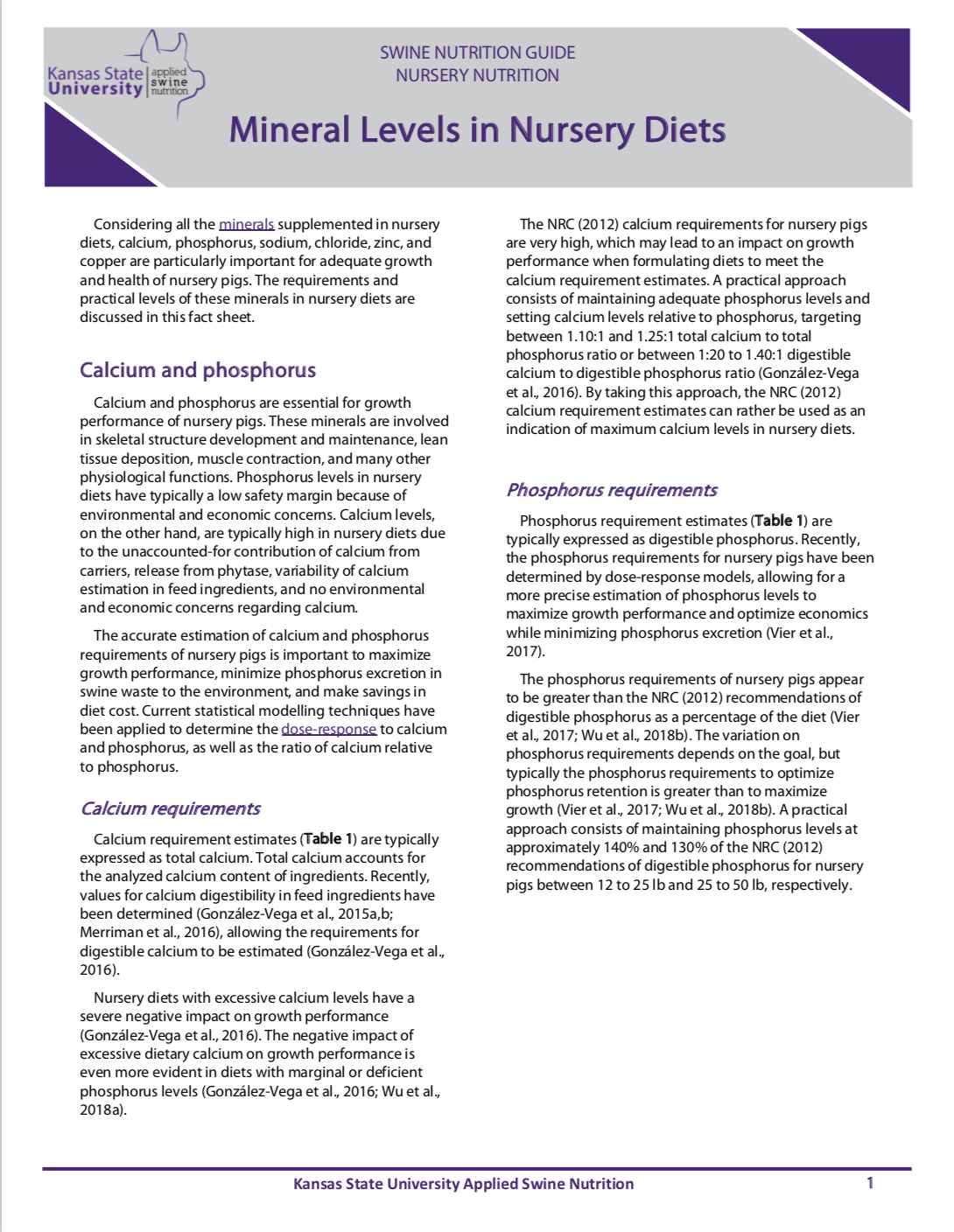Sodium and chloride in nursery diets
Sodium and chloride are particularly important for nursery pigs. The minerals are involved in nutrient absorption, electrolyte balance, and regulation of pH. Salt is the most common source of sodium and chloride, but it is often not included in sufficient quantities to meet the requirements of sodium and chloride of nursery pigs. Sodium and chloride concentration are often overlooked in nursery diets because some commonly used ingredients contain high levels of sodium, particularly dried whey (approximately 1% sodium) and spray-dried plasma protein (approximately 3% sodium).
The requirements of sodium and chloride are greater for nursery pigs and abruptly decrease for grow-finish pigs. Recently, the requirements of sodium and chloride for nursery pigs have been determined (Shawk et al., 2018a,b) and indicated that the NRC (2012) requirement estimates are accurate ( Table 1 ). Nursery diets need as much as 0.5 to 0.6% added salt to meet the requirements of nursery pigs. Nursery diets deficient in salt result in decreased growth performance due to reduced feed intake and poor feed efficiency (Shawk et al., 2018a,b).

